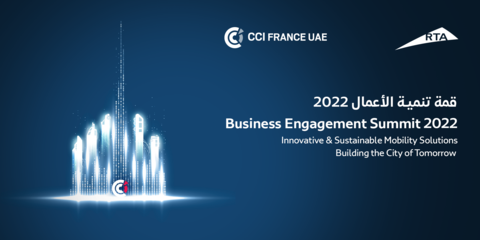Actualités • Bilans d’évènement
[Panel] Multimodal Solutions as Mobility Services

Moderator: Tell us about the evolution of Multimodal Mobility Services and how these can be integrated into private transportation.
Alexandre Azevedo de Cruz, Senior Project Manager at Egis Rail
Mass mobility services started to develop in the 1970s and greatly improved in the 1980s. The rise of digitalization and big data opened the door to new offers that were complementary but also in competition with what existed before. Transport authorities had to adapt to the new offer, to these new solutions, public transport became more complex and some actors were outside of the regulatory context. There was an increasing need for better efficiency and more reliability.
Muna Abdul Rahman A Osaimi, Director Strategic Transportation Planning at Roads & Transport Authority (RTA)
Means of public transportation tripled over the last 15 years in the UAE, today the metro and tram networks cover a 100kms, there are 1600 buses including intercity, urban and feeder buses (between metro/tram stations and residential areas). There is a unified ticketing system in place with an integrated fee structure, and an integrated mobility platform. Public transportation is combined with car-sharing and taxi services, the use of live locations and new payment options facilitated the process. There is also a point collection system in place that permits users to spend the points earned on services. Bus on demand services were also introduced as well as bike sharing: there are 780 bikes at 78 stations and the plan is to have 3800 bikes in the future. Plus there is the e-scooter pilot program, the aim is to extend this to 10 then later to 30 areas in the city. These new modes of transportation also required new business models.
Moderator: What are the major challenges in implementing multimodal solutions?
Alexandre Azevedo de Cruz, Senior Project Manager at Egis Rail :
The main challenges in implementing multimodal solutions are:
- Identifying discrepancies between demand and supply;
- Competitive pricing;
- Transparency in pricing and making sure the user understands the cost of the journey;
- No integrated system for payment;
- Creating new infrastructure, new routes, new stations;
- Digitalization;
- Keeping up with customer expectations;
- Stakeholder and operator segmentation, different authorities for each transport mode;
- Separation between private and public transport;
- Developing sustainable and exhaustive information on mobility;
- Integration of the stakeholders: all the regulatory process is in place for this to happen;
- Biggest challenge: evolution of stations
Muna Abdul Rahman A Osaimi, Director Strategic Transportation Planning at RTA
RTA’s success factors in implementing multimodal solutions are:
- Engaging with customers, have their feedback and constantly strive at improving services accordingly;
- Benchmarking before introducing new modes;
- Selecting the right business model;
- Adopting policies and legislations;
- Providing data to RTA by the operators;
- Public-private partnerships;
- Flexibility in pricing: the user can select the right price;
- Good customer service;
- Optimal integration with public transport;
- Public awareness, promoting services and safety
Alexandre Azevedo de Cruz, Senior Project Manager at Egis Rail :
The UAE / Dubai is has all the cards in hand to ensure a successful integration of multimodal solutions.




